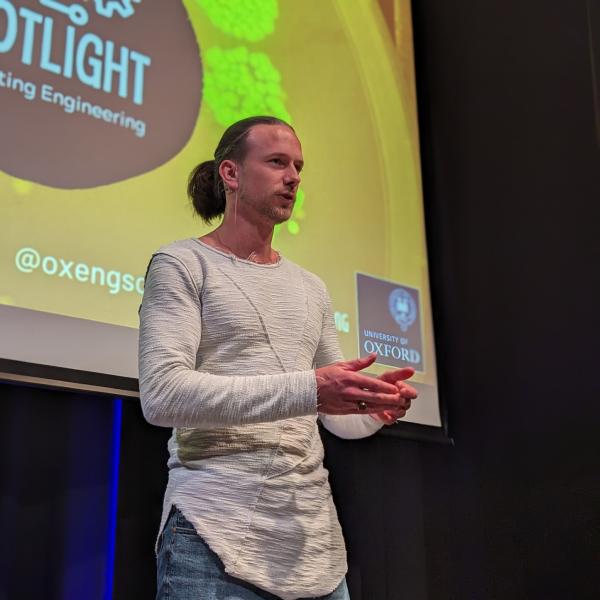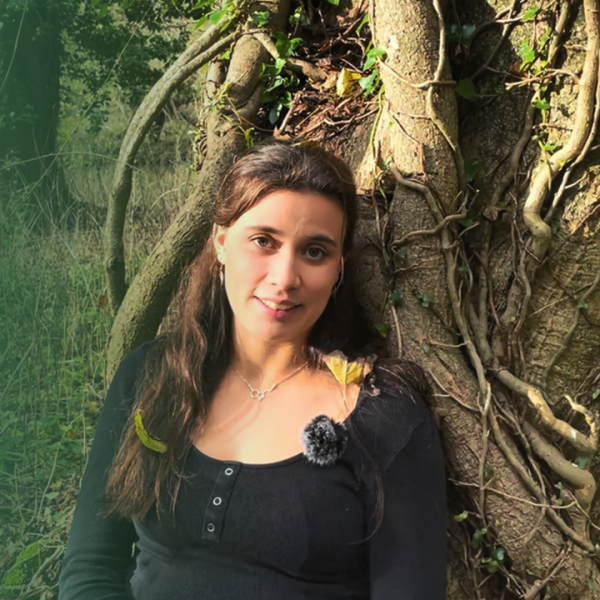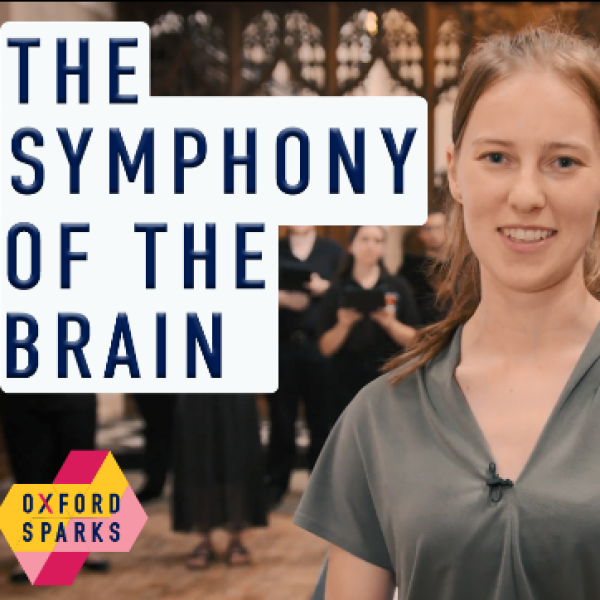Unit brings neuroscience research to the public at New Scientist Live 2024
Unit brings neuroscience research to the public at New Scientist Live 2024
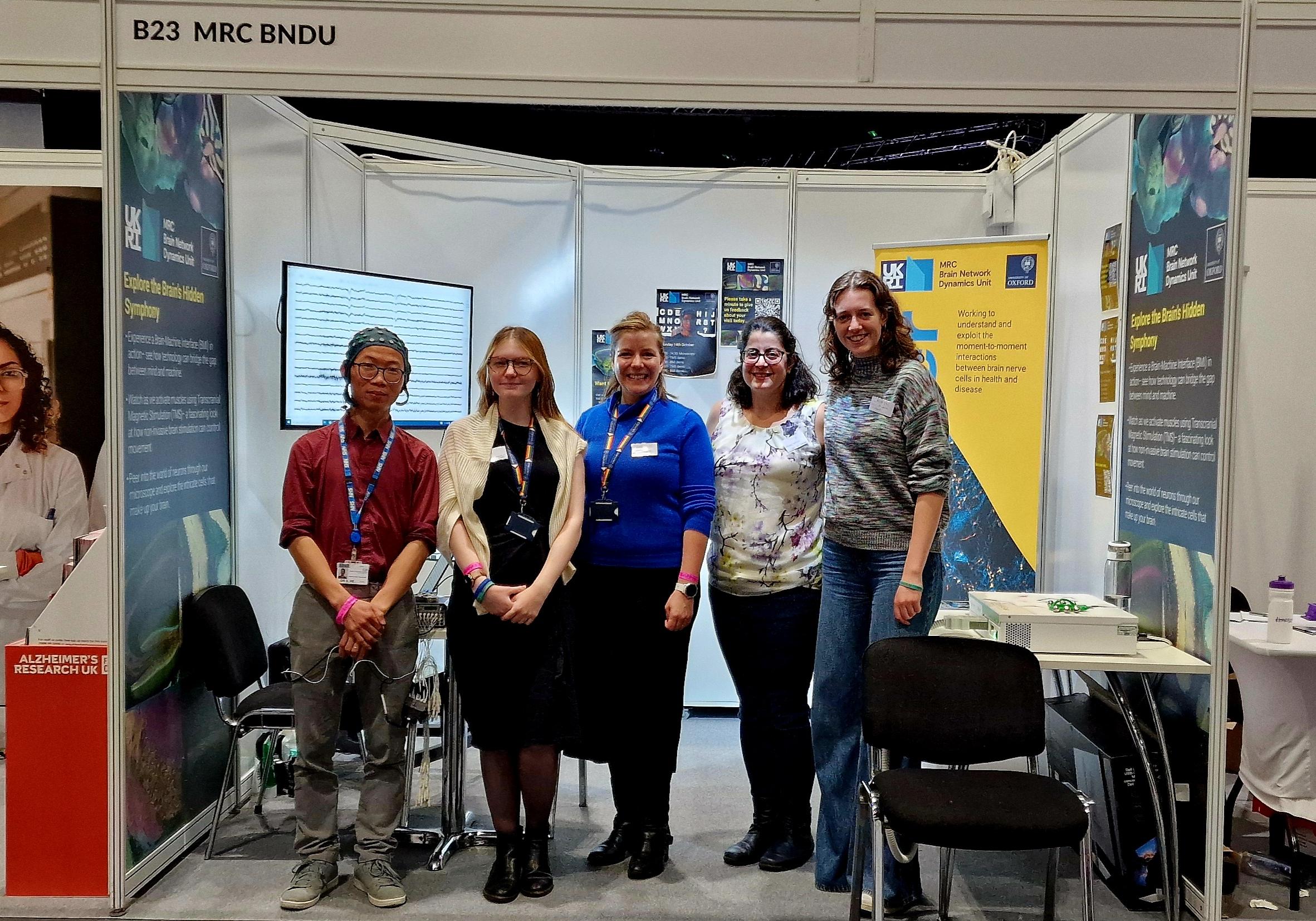
And that’s a wrap! Unit researchers on the MRC BNDU stand after a very busy Schools’ Day at New Scientist Live. From left to right: Shenghong He, Jennifer Blackmore, Natalie Doig, Polytimi Frangou, and Lauryn Foster.
Unit researchers recently brought cutting-edge neuroscience to the public through interactive exhibits and live demonstrations at this year’s New Scientist Live event, held in London from 12th to 14th October. New Scientist Live is a huge festival of ideas and discoveries, showcasing the latest in science and technology, with an attendance of over 25,000 people. Visitors to the MRC BNDU stand were invited to immerse themselves in the latest advances in neuroscience, exploring how researchers can decode brain signals to understand movement, memory, and early indicators of neurological disorders.
The Unit stand was a hub of hands-on activities, offering visitors a chance to see a brain-machine interface (BMI) in action and to witness how these innovative technologies may transform communication and interaction. Visitors were talked through each activity by some of the Unit’s early-career researchers. Postdoctoral researcher Shenghong He demonstrated the potential of BMI by spelling words on a screen using signals from his brain, recorded by an electroencephalogram (EEG) cap. This demonstration captivated audiences and led to discussions about how we can utilise brain waves in the future.
Another popular activity at the Unit stand was the chance to look through a fluorescence microscope and observe dopamine cells in the brain. This special experience allowed visitors to see firsthand the cellular structures that play a crucial role in the brain’s movement and reward circuits, sparking insightful conversations about how studying these cells is essential to understanding complex brain functions and changes in brain conditions such as Parkinson’s.
Visitors were also introduced to other innovative research methods, including transcranial magnetic stimulation (TMS), a non-invasive technique that enables scientists to stimulate nerve cells and cause responses like muscle twitches. Young attendees were especially delighted to use the TMS machine to stimulate the researchers’ muscles!
Visitor feedback from the event reflected the enthusiasm and curiosity sparked by the MRC BNDU stand. When asked to describe their visit in one word, feedback was overwhelmingly positive: attendees called the experience “informative,” “fascinating,” “awe-inspiring,” and “super interesting.” The Unit team’s interactions with attendees further solidified the experience as a highlight, with one visitor remarking on the “amazing experience” and “wonderful presenters.”
The third day of New Scientist Live is a dedicated Schools’ Day with an attendance of 7,500 students. Pupils visiting the MRC BNDU stand were able to discuss not only the research carried out at the Unit, but also talk with postdoctoral staff and students about careers in STEM. Following this, 77% of respondents said that they “would be more likely to consider a career as a brain researcher.”
Natalie Doig, Co-Chair of the BNDU Public Engagement Committee, reflected, “This event offered a valuable opportunity for Unit researchers to connect with the public, engaging a diverse audience in meaningful discussions about brain research and future treatments. Ultimately, we hope to inspire the next generation of neuroscientists! A massive thank you to all Unit members involved.”
Come and explore the brain’s hidden symphony! Set-up of the MRC BNDU Stand at New Scientist Live 2024.
Unit researcher Polytimi Frangou and student Lauryn Foster demonstrate how you can use transcranial magnetic stimulation (TMS) to stimulate the motor cortex get a resulting twitch in the hand.
Unit researcher Shenghong He uses his own brain waves, as recorded with EEG, to show how the signals can change dramatically when he closes his eyes.
Visitors to the stand were invited to watch the Unit’s latest documentary about brain research produced in partnership with Oxford Sparks.
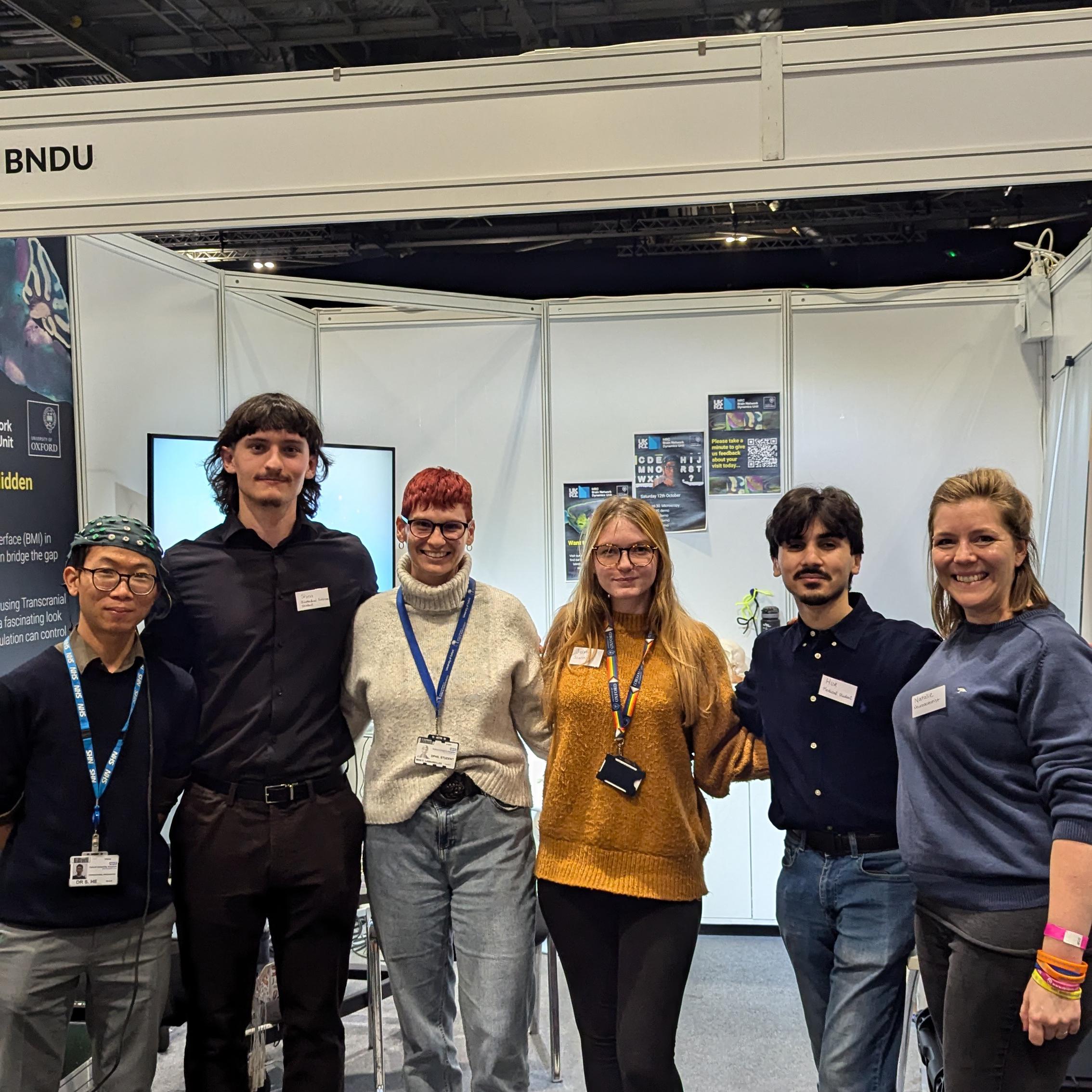
The Unit team of early-career researchers on the first day of New Scientist Live. From left to right: Shenghong He, Shea Heaney, Camille Lasbareilles, Jennifer Blackmore, Hur Shah and Natalie Doig.
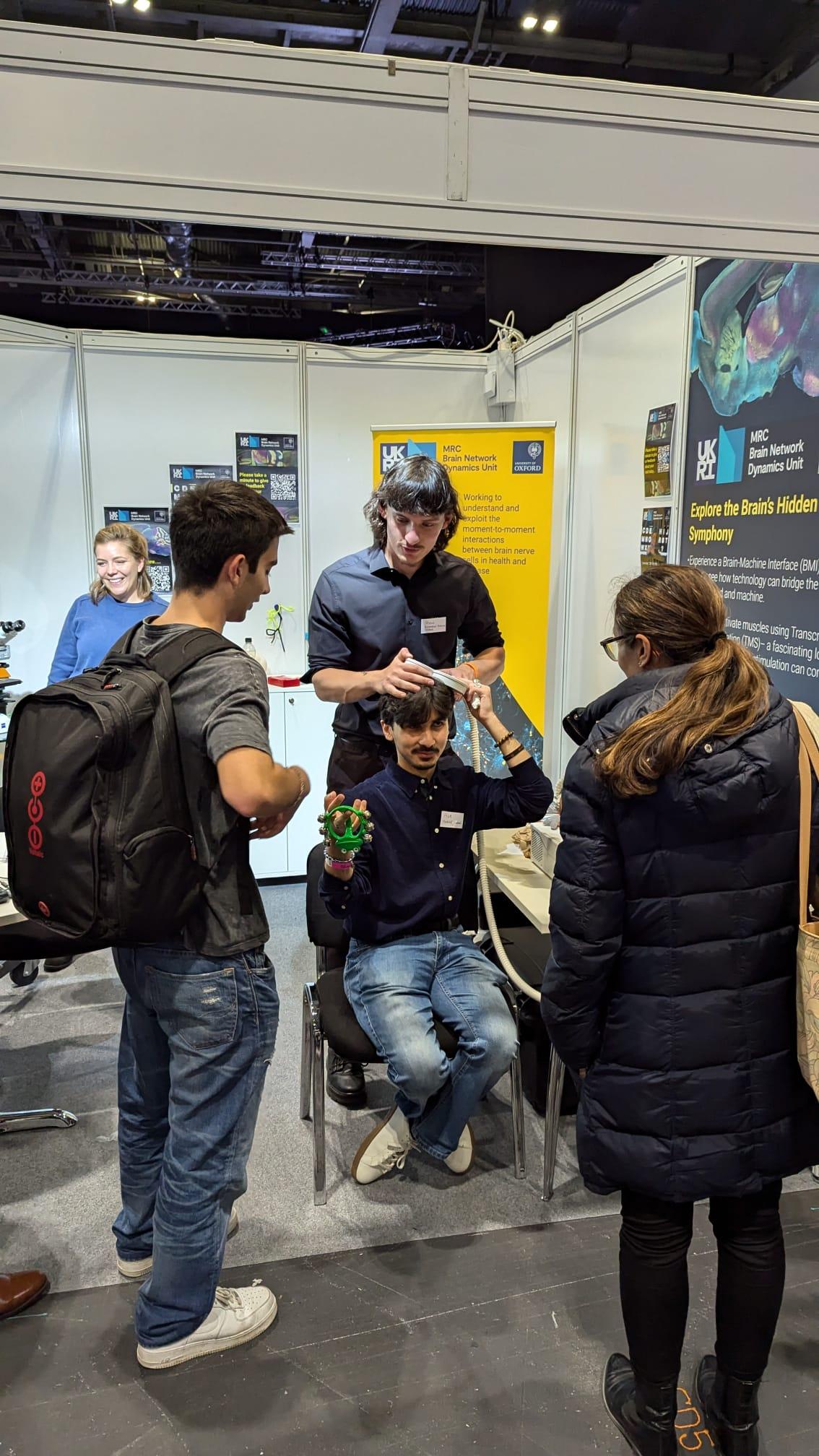
Students Hur Shah and Shea Heaney demonstrate how transcranial magnetic stimulation (TMS) works and potential for treating brain disorders.
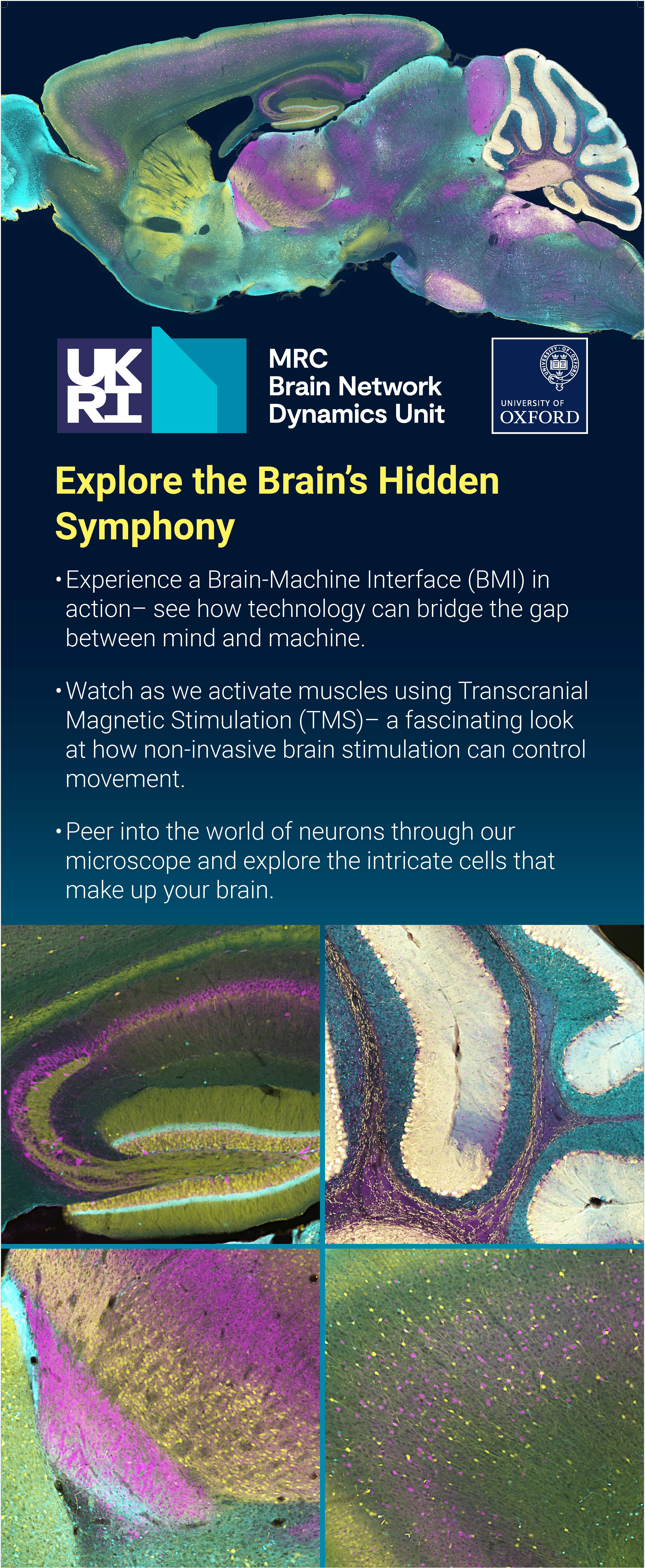
Visitors to the MRC BNDU stand at New Scientist Live were invited to “explore the brain’s hidden symphony” through live demonstrations and interaction with researchers.

Some of the words used to describe visitors’ experience at the MRC BNDU stand.
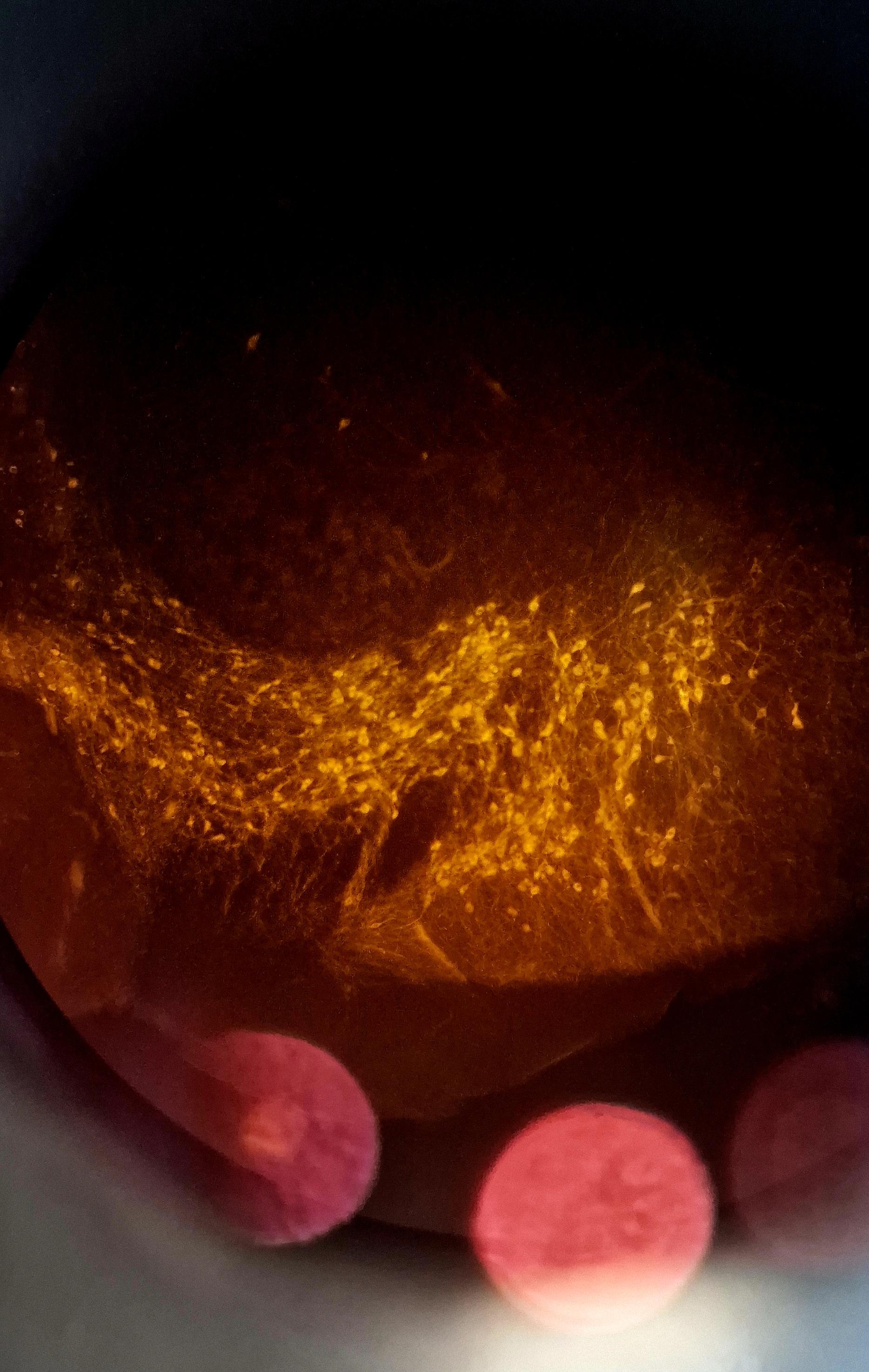
Visitors the MRC BNDU stand had the opportunity to look down a fluorescence microscope and see glowing dopamine neurons.
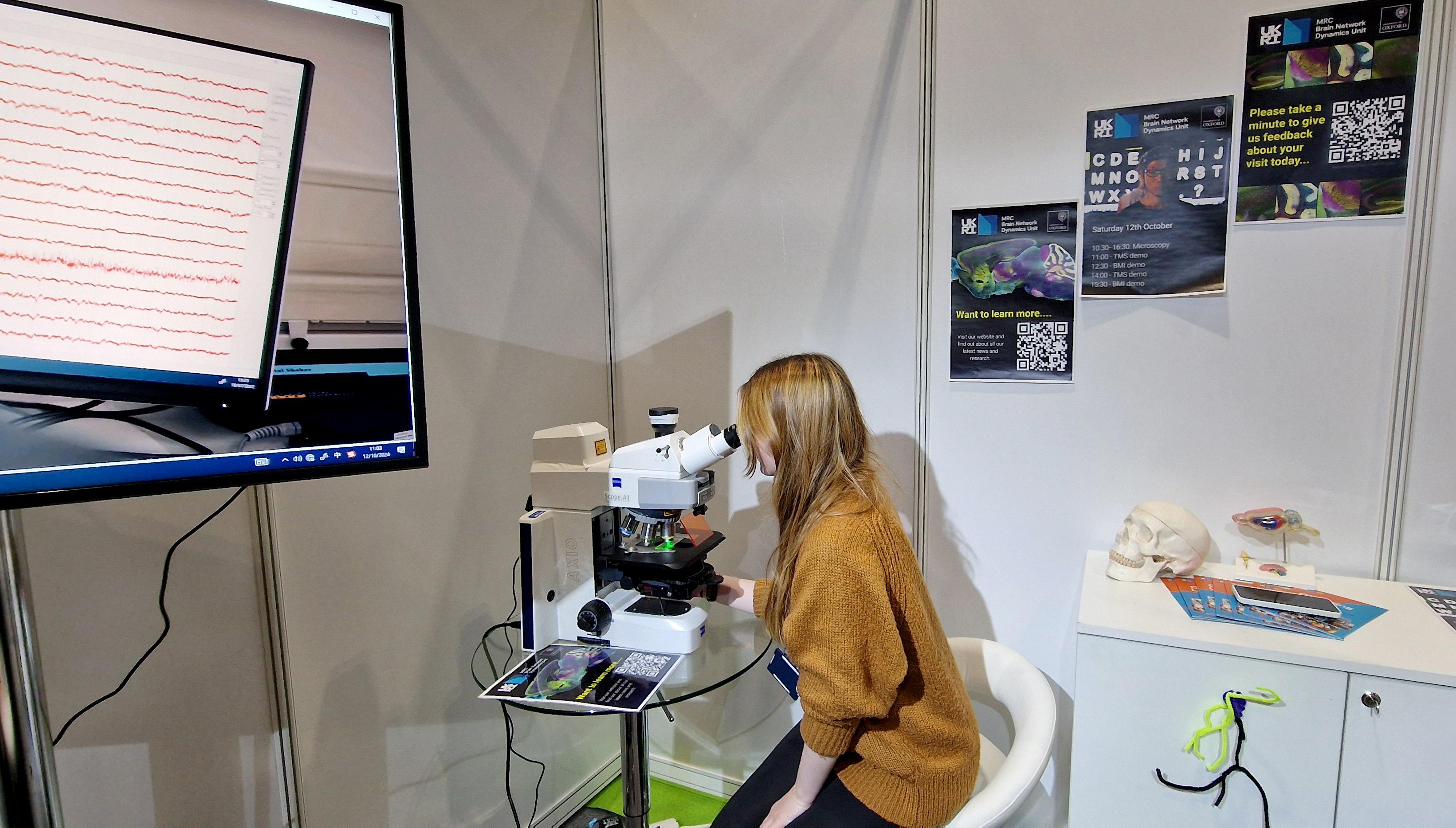
Unit Research Assistant Jennifer Blackmore sets up the fluorescence microscope ready for visitors to the MRC BNDU stand.
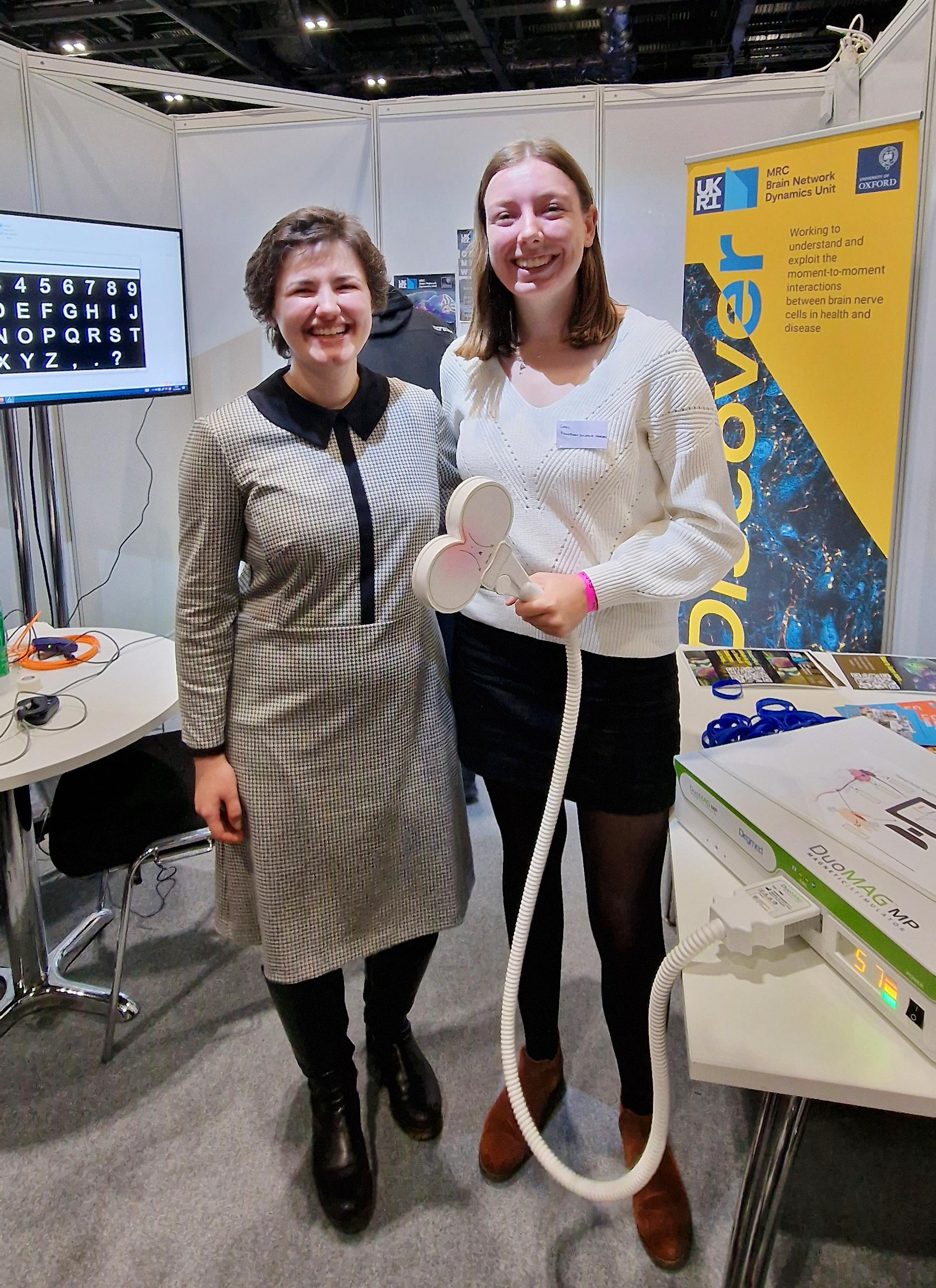
Ready to be stimulating! Ioana Grigoras and Grace Kimber are all set to talk demonstrate and discuss TMS on Day 2 of New Scientist Live 2024.
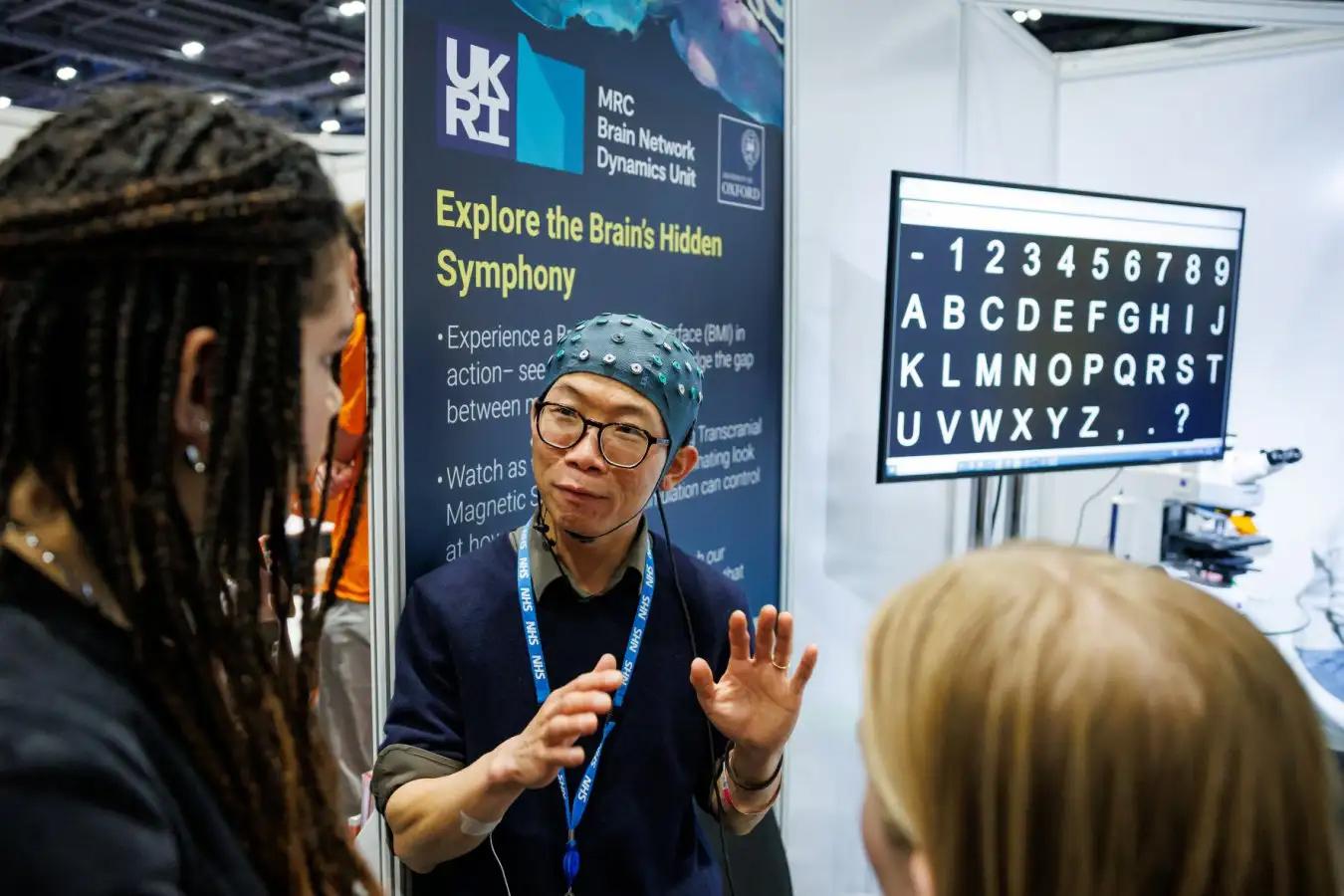
Unit researcher Shenghong He demonstrates a brain machine interface (BMI) and discusses its potential in treatments for neurological disorders. Image credit: https://www.alistairveryard.com/
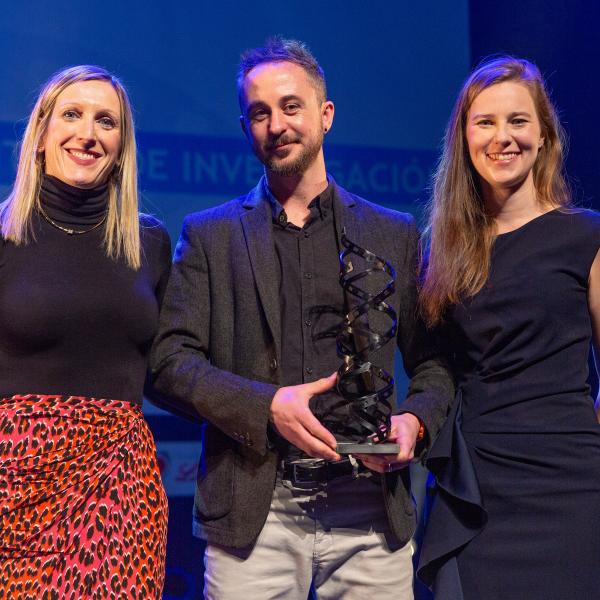
Rob Key (middle; representing Oxford Sparks) and Demi Brizee (right; representing the MRC Brain Network Dynamics Unit) receive the award for Best Film Produced by Universities and Research Institutes.
Photo credit: Manuel Castells Clemente / #LabMeCrazy! International Film Festival
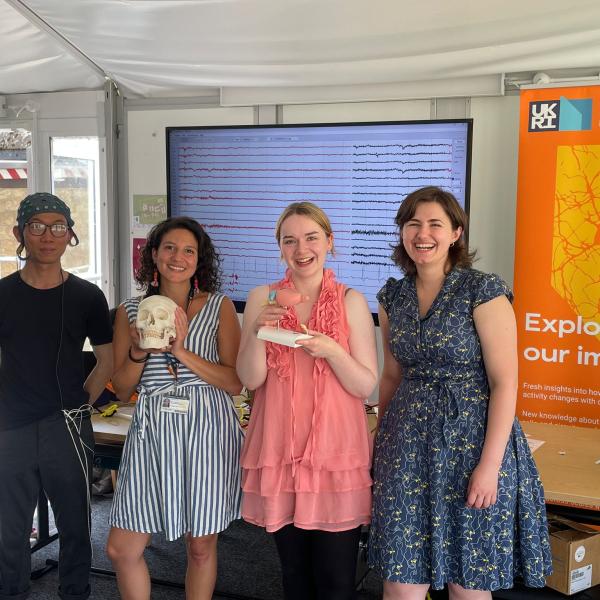
The enthusiastic BNDU team of scientists. (L-R) Shenghong, Chiara, Rosie and Ioana.
